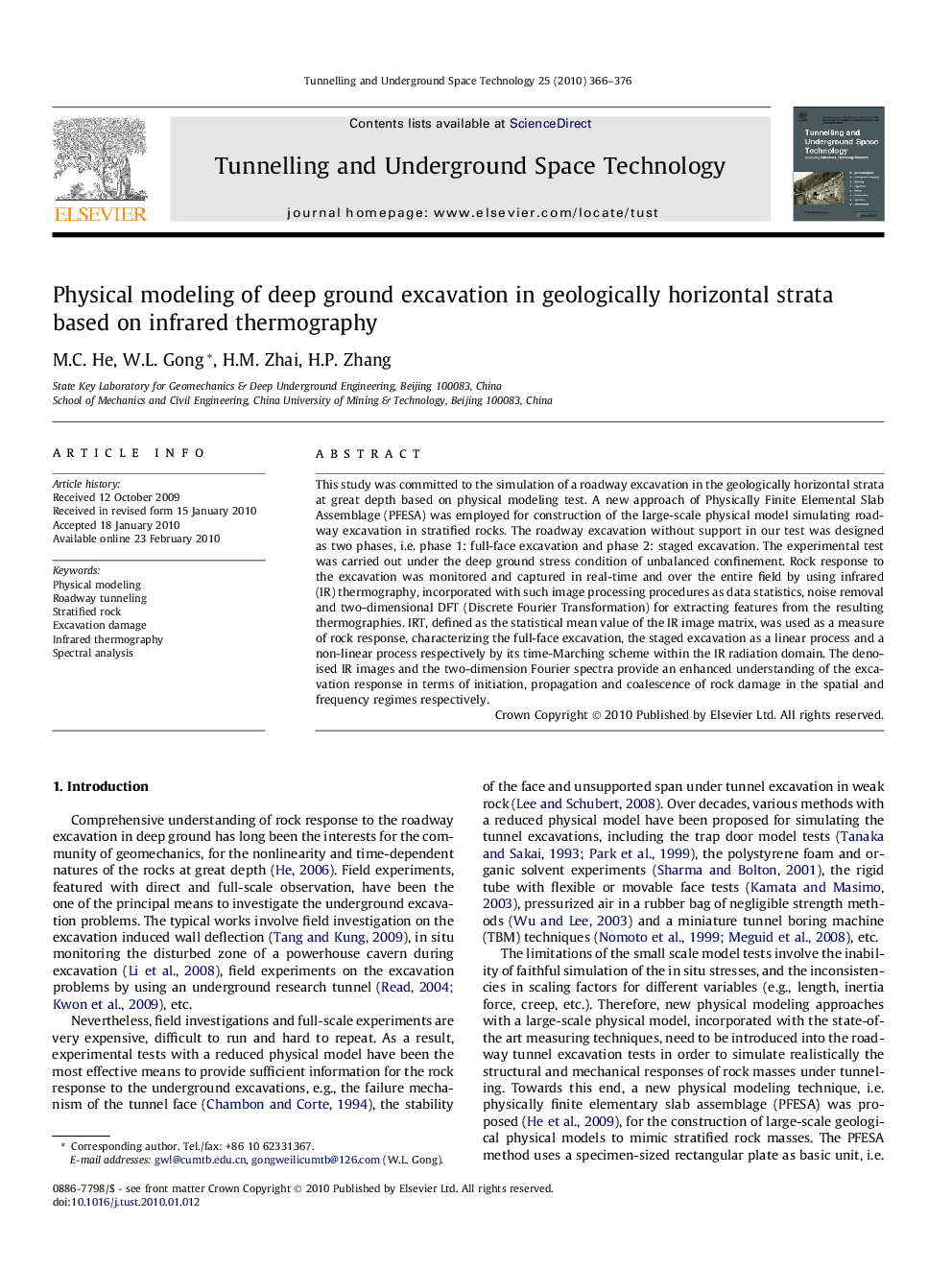| Article ID | Journal | Published Year | Pages | File Type |
|---|---|---|---|---|
| 310865 | Tunnelling and Underground Space Technology | 2010 | 11 Pages |
This study was committed to the simulation of a roadway excavation in the geologically horizontal strata at great depth based on physical modeling test. A new approach of Physically Finite Elemental Slab Assemblage (PFESA) was employed for construction of the large-scale physical model simulating roadway excavation in stratified rocks. The roadway excavation without support in our test was designed as two phases, i.e. phase 1: full-face excavation and phase 2: staged excavation. The experimental test was carried out under the deep ground stress condition of unbalanced confinement. Rock response to the excavation was monitored and captured in real-time and over the entire field by using infrared (IR) thermography, incorporated with such image processing procedures as data statistics, noise removal and two-dimensional DFT (Discrete Fourier Transformation) for extracting features from the resulting thermographies. IRT, defined as the statistical mean value of the IR image matrix, was used as a measure of rock response, characterizing the full-face excavation, the staged excavation as a linear process and a non-linear process respectively by its time-Marching scheme within the IR radiation domain. The denoised IR images and the two-dimension Fourier spectra provide an enhanced understanding of the excavation response in terms of initiation, propagation and coalescence of rock damage in the spatial and frequency regimes respectively.
